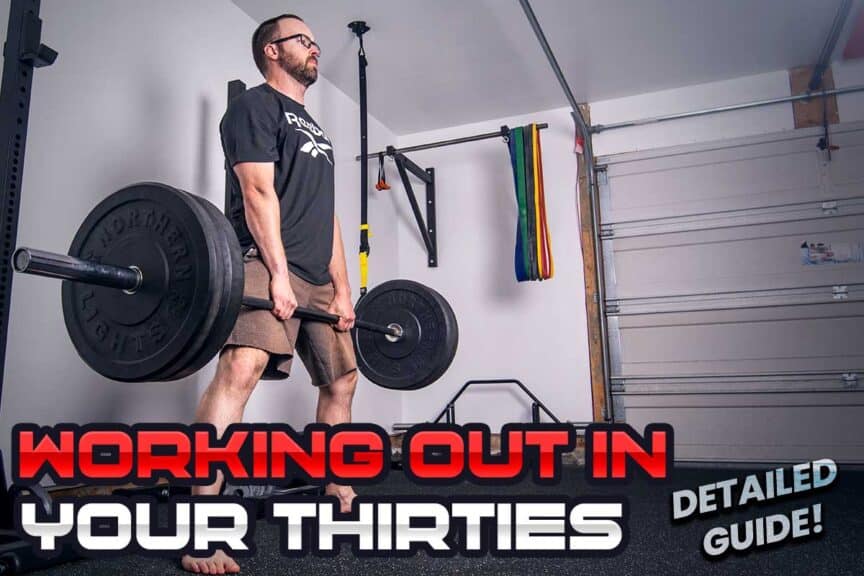I’m on the back end of my thirties now, which means that I’ve been lifting weights for a little over two decades now—wow, that’s a crazy thought. I still love it just as much as I did when I first began this whole pursuit in my high school weight room back in 2003.
While lifting in my thirties isn’t quite the same as it was in my teens, it’s still entirely doable; I’m not a decrepit old man, and if you’re in your thirties, neither are you.
If you want to learn how to start lifting weights and becoming active in your thirties, this article will walk you through what you need to know and the very rewarding activity and lifestyle you’re about to uncover.
Learning to work out and lift weights in your thirties is entirely doable, and you can make exceptional progress. You’ll want to start slow and remember it’s a lifelong learning process. Take time to learn what your body tolerates, and before long, you’ll feel and see some terrific results.
So, sit back and read along as I show you where to start, what to expect, and what to do as you begin to embark on a beautiful journey.
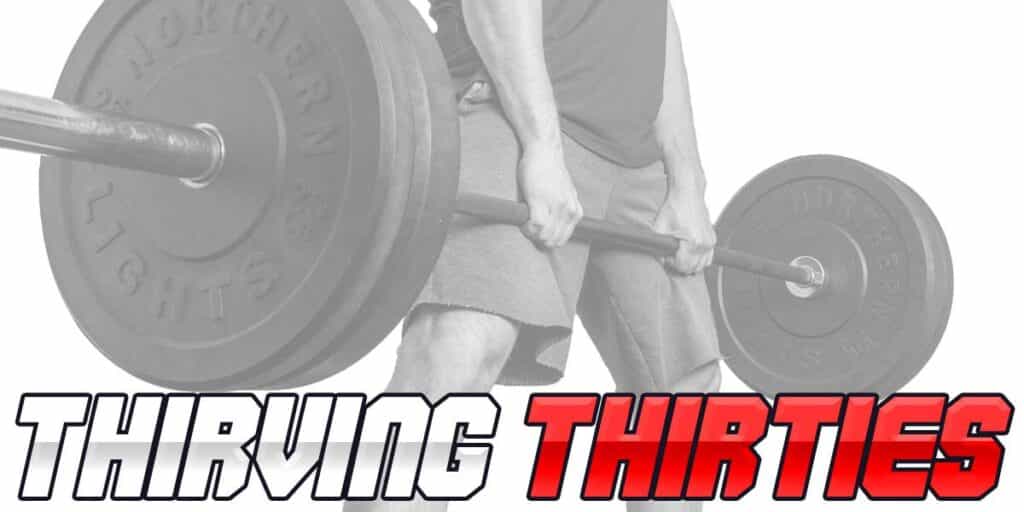
A small request: If you find this article to be helpful, or you appreciate any of the content on my site, please consider sharing it on social media and with your friends to help spread the word—it’s truly appreciated!
Where to start: Three key steps to take
It can be beyond overwhelming for those new to the weightlifting and fitness game to know where to start. Everyone has an opinion, or “secret” strategies, and so on. The goal of this article isn’t to go over every possible thing to know when starting—there’s just no way I can do that within a blog.
Instead, the goal is to make sure you are pointed in the right direction, so to speak, so that you’ll be safe, be able to track your progress, and have healthy expectations of what you’ll likely experience in this new (and beautiful) pursuit of yours.
Pro Tip: You’re going to need to adopt a mentality of “starting messy.” You will make mistakes, undergo a lot of trial and error, and will need to refine your pursuits as you learn to tune-in to what your body likes and doesn’t like. Keep safety as your number one priority at all times, and after that, don’t be afraid to make mistakes and learn as you go—it’s what every weightlifter, regardless of their age, has done.
So, keep the following pointers throughout the rest of this article in mind, and then have at ‘er!
Related article: FREE Beginner’s Program to Bodyweight Exercise (Three Month Program)
Starting point 1: Getting medical clearance
If you have any sort of underlying medical condition, have been sedentary for an extended period of time, or have never worked out before, everything starts with getting medical clearance to do so. I say that for two reasons:
- I care about your safety and wellbeing
- I want to cover my butt from a liability standpoint
If you’re otherwise relatively healthy, you’ll likely be fine, but I would advise getting a physical and clearance from a licensed medical professional just to be on the safe side. I would recommend this for anyone wanting to begin adopting a physically active lifestyle and not just those who are in their thirties.
Starting point 2: Consider taking photos & measurements
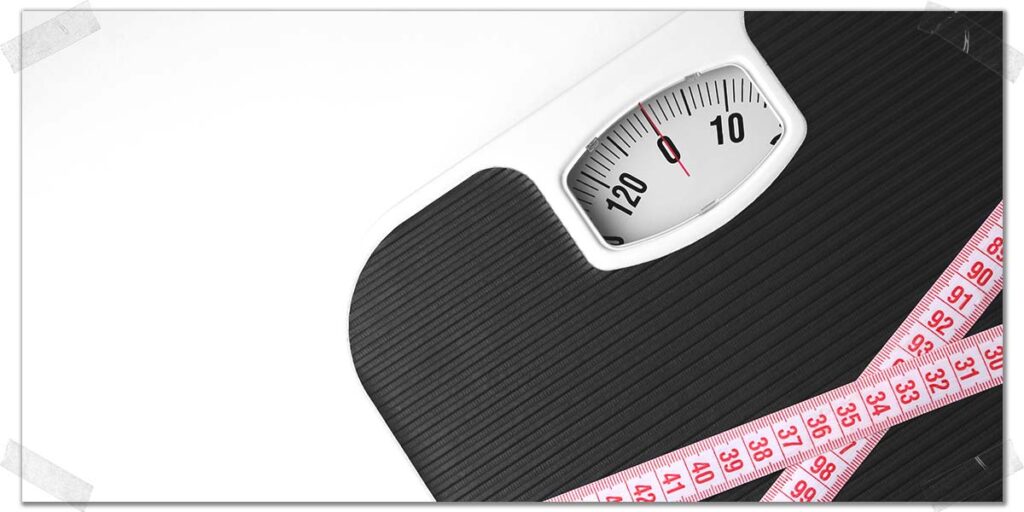
Once you’ve been medically cleared for physical activities, it’s not a bad idea to take some photos and measurements of your body to help you monitor your progress. You don’t have to do this, of course, but it can be very helpful when taking out any guesswork as to whether or not you’re making any progress.
After all, you’re about to change your body’s composition (i.e., adding some muscle and dropping some body fat). Whether you’re looking to sculpt and tone your body a bit or go for more of a bodybuilder physique, pictures are an outstanding way to reassure and motivate you with the progress you’re making.
Don’t worry; with modern cell phone technology, this is very easy to do all by yourself, so you can easily do this without anyone else around if you’re more comfortable doing this alone.
Here are some helpful body measurements that individuals commonly take when starting their strength and fitness journey:
- Bodyweight (a simple bathroom scale does the trick)
- Waist circumference (often measured at the height of the belly button)
- Hip circumference (measured around the widest part of the hips)
- Thigh circumference (measured just beneath the gluteal fold or butt cheek)
- Chest circumference (often measured around nipple height)
- Upper arm circumference (measured around mid-height)
- Neck circumference (often measured around the widest part)
Pro tip: While you can do so whenever you please, re-taking your measurements once a month is a common re-assessment interval; it allows enough time for body changes to be measurable and is frequent enough to ensure you’re making progress in a timely fashion.
Few things are more rewarding when you first start working out and performing a resistance training routine than having objective metrics that show your arms are getting beefier, that your waist is getting smaller, and that your body is adapting in ways that are meaningful to you.
Remember, photos don’t lie!
Starting point 3: Know and set your lifting goals and overall fitness goals
There’s an old saying that goes something along the lines of “if you don’t know what you’re after, how will you know when you get there?”
Makes perfect sense. Without goals, you’re not only aimless, but you will also likely find yourself becoming distracted and discouraged from having no tangible objectives to chase and achieve.
Goals give us direction—they give us something to strive for and act as a beacon to keep us on course with our pursuits; they give us something to latch onto with our pursuits.
As an example, some basic lifting goals you may want to consider setting can include:
- Being able to bench press your bodyweight
- Add 50 pounds to your deadlift in the next 6 months
- Perform 5 bodyweight chin-ups without needing to take a break in between.
For body composition goals, these could be goals such as:
- Dropping a certain number of inches off your waistline
- Reaching a certain body fat percentage or a certain BMI number.
- Adding half an inch to your biceps size over the next year.
These are simplistic examples, but they should hopefully help you gain some preliminary insight toward body-based goals you could set as you start your weightlifting and fitness journey.
Pro tip: when it comes to goal setting, be sure to set behaviour-based goals in addition to outcome-based goals!
What to consider as you start lifting
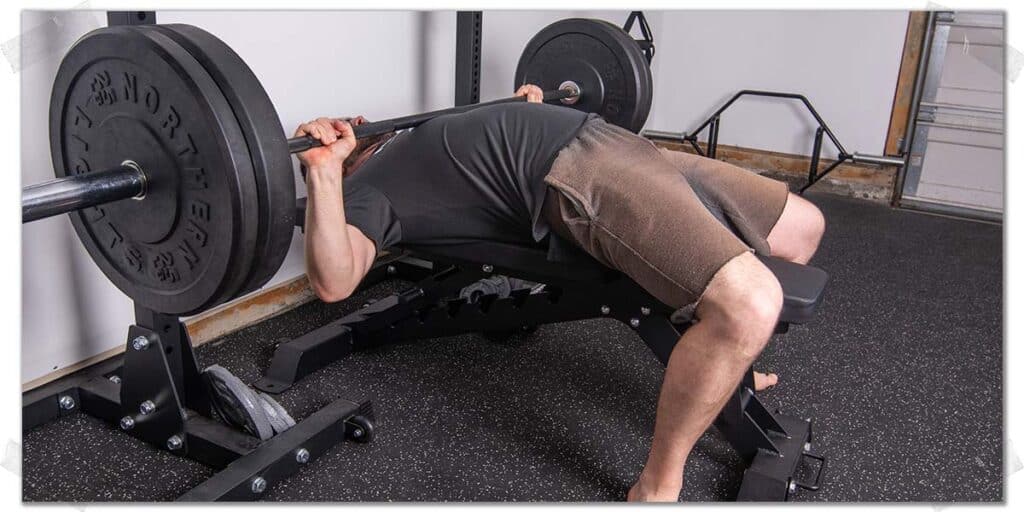
Regardless of your age, if you’re brand new to lifting weights, there can be a lot to take in and consider as you get underway. This is true for any beginner, not just those of us who are thirty years or older. Don’t sweat it; this is a lifelong pursuit and one that’s meant to be a journey or continual learning.
“The pursuit of lifting weights is a lifelong journey, and it’s one that involves an unending amount of trial and error as you continue to become an expert on your own body. It doesn’t matter if your journey begins at age thirteen or age thirty-nine; you expect to always be learning, with much of that learning coming through trial and error.”
With that being said, it would be prudent of you to consider the following factors. In my two-plus decades of studying and pursuing all things fitness-related, I believe the following factors are immensely important to your overall success with lifting weights.
In your thirties, you may no longer be a spring chicken, but you’re a long way off from having a body that can’t tolerate a good physical challenge.Click to PostPrevious injuries and limitations
Every lifter and athlete—regardless of their age—needs to take into account any previous or current physical issues (such as injuries and limitations) with their body.
By our thirties, most of us have at least a couple of nagging aches, pains, or limitations we will need to navigate as we go through our pursuit of strength training (I am no exception to this). So, the need to take such factors into account only becomes more crucial for those of us who have a handful of extra years over our younger fellow lifters.
As such, any individual in their thirties (or older) wanting to know how to lift weights would do well to tune into how their body is feeling and make a conscious effort to perform their strength training exercises in a manner that is mindful of such issues. Your strength training pursuits should be aimed and implemented in a way that works to overcome them rather than ignore them.
What many people don’t realize is that lifting weights, when done properly, helps to eliminate or greatly reduce many of the daily aches and pains we experience, which often are present due to insufficient levels of activity in our daily lives.
Ultimately, since our needs, goals, aches, and pains are all different, the pursuit of lifting weights and physical fitness should always be individualized to the needs and abilities of the lifter.
Of course, if you’re just starting out, it may initially be difficult to know how to individualize your workout routine to best suit your needs, but don’t sweat it; you can get help with this, and you will certainly learn through continued experience.
As you first begin to lift weights, here are the most important factors to consider, both of which are based on the safety and success of your lifting pursuits:
- Pay extra attention to any body parts or areas that have had a notable previous injury in the past. These areas might not initially move as well as they should, might be extra sore, or may tire out more quickly than they otherwise should.
- If you have any areas that are limited in their movement or strength, respect the limitation(s) rather than trying to aggressively push through them. They’ll likely improve with time and consistent effort. Being aggressive with them likely won’t do you any favours.
- Make it one of your goals to work on and improve one or more of these physical limitations you may have (a tight hamstring, a stiff shoulder, etc.). It will take time and consistent effort, but weightlifting can do amazing things to reduce muscle stiffness and optimize joint movement when performed correctly.
What type of workouts will be best?

There’s a world to unpack here, and unfortunately, I can’t do it within this article. And while I can’t go into all the specifics and individual workout routines that can be implemented, what I can do is provide you with the overarching concepts on what you will likely want to be aware of when moving forward with your strength training exercise and routines.
Related article: Overwhelmed With Fitness Information? Start With THESE Tips
Here are the more prominent concepts to consider which will help you select and implement the most ideal workouts possible for your strength training pursuits:
- Strength training workouts should take no longer than an hour to complete—including your warmup. This is especially true if you’re a beginner. A handful of exercises for each workout should be all that it takes for adequate muscle and body stimulation. If it takes any longer than this, you’re either performing too many exercises or being inefficient with your training time.
- You can opt to perform full-body strength training workouts, or you can divide your workouts into training splits. A training split refers to which portions or muscle groups of your body you train within a particular resistance training session.
- For your exercises, start with two or three sets of each, and keep your repetition range somewhere between ten to fifteen repetitions. These parameters will ensure adequate muscle stimulation without excessively tiring your body or risking injury from lifting extremely heavy loads.
- You can perform all sets of one exercise (taking a short break between each one) before moving to the next exercise, or you can perform one exercise and then switch to the next exercise, then switching to the next one (known as circuit training) and take a break when you’ve completed the last exercise on your list. At this point, take a break, then run through each exercise again. Set-by-set training and circuit training both have advantages and disadvantages—neither is inherently right or wrong.
- You can perform cardio training within the same workout if you’d like. As a beginner, I’d recommend you perform your cardio after your weightlifting since it might be difficult to maintain good lifting form if you’re tired out from your cardio training.
“What many people don’t realize is that lifting weights, when done properly, helps to eliminate or greatly reduce many of the daily aches and pains we experience, which often are present due to insufficient levels of activity in our daily lives.”
What type of exercises & equipment to use
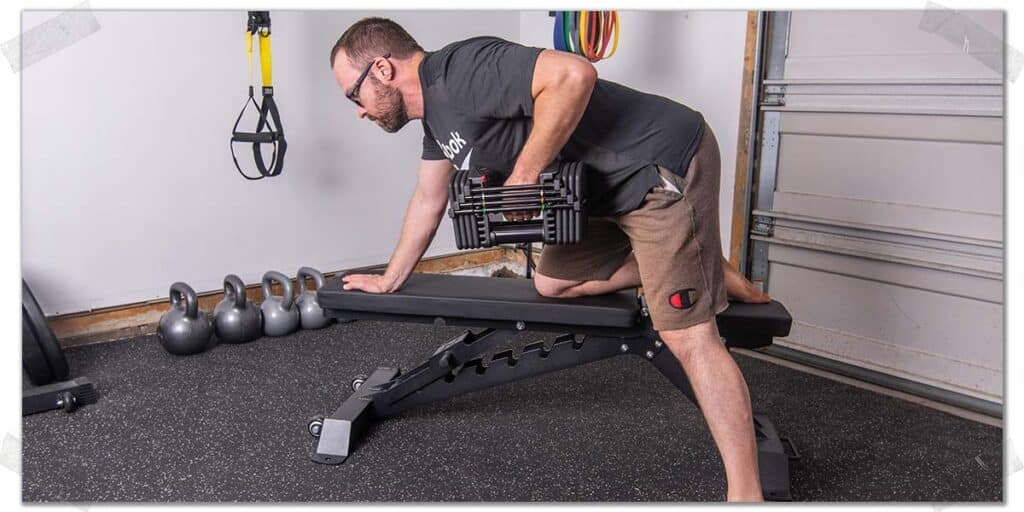
It can feel rather overwhelming to know which type of equipment you should use when you’re new to lifting weights. There are a lot of factors at play here and a near-infinite number of situations which will determine what will be ideal for your needs.
Nonetheless, your personal safety will always be the top factor to consider—it’s pretty hard to lift weights and remain active when you’re injured or in pain. If you’re not confident with a piece of equipment—be it a machine, dumbbells, kettlebells, barbells, etc., consider performing a different exercise or using equipment that you’re more confident with.
Additionally, here are the other prominent factors you’ll want to consider for your equipment and exercise selection:
- Ultimately, you will have to work with what you have access to. You might not have much if working out at home, and your local gym might not have every type of training equipment imaginable. Don’t sweat it; after considering your safety, the best equipment to use is the equipment you have access to.
- You can train every muscle group and every type of movement pattern with basic free weights. A set of dumbbells alone can provide a near-infinite number of strength training exercises and a lifetime of workouts. So, don’t feel like you need a plethora of equipment to get the results you’re after.
- Performing exercises that target multiple muscle groups simultaneously (known as compound movements), such as squats, deadlifts, and bench press, should always be performed first within your workout since they take the greatest amount of effort and technique. Perform any individual muscle exercises (biceps curls, triceps extensions, etc.) after your compound movements have been completed.
“Goals give us direction—they give us something to strive for and act as a beacon to keep us on course with our pursuits; they give us something to latch onto with our pursuits.”
Should you hire a personal trainer?
I’m often asked if hiring a personal trainer can be helpful when learning how to lift weights and work out. The answer is, of course, that it certainly can be helpful. That being said, it can also be expensive and, as such, perhaps not a viable option for those on a tight budget or who don’t have easy access to a gym.
Here are some helpful tips to keep in mind when it comes to hiring a personal trainer:
- You don’t need to hire a trainer for an ongoing basis; you can hire one for a few sessions to show you how to perform any exercises you’d like to perform in your routine and then check back with them later down the road when needed.
- While most trainers have a baseline proficiency in physical exercise, if you hire a trainer, try to hire one with expertise in the type of resistance training or exercise you’d like to perform.
- If hiring a trainer isn’t an option, plenty of helpful books and resources can point you in the right direction. While I have read many of them over the years, for resistance training, and could certainly recommend dozens of them. For beginners who are interested in learning to lift weights, I recommend Bill Pearl’s Getting Stronger book.
Related content:
What to expect: Learning to lift weights in your thirties
If you’re in your thirties and haven’t lifted weights before or performed any sort of resistance training routines in the past, it can be helpful to know what you’re likely to encounter as you set out on your journey to becoming stronger and healthier.
While each individual’s pursuit will look different, what follows below are three of the very common—almost universal—scenarios you’ll experience as you pick up your weights and get into your new routine or lifestyle.
Expectation 1: A hefty amount of trial and error
The pursuit of lifting weights is a lifelong journey, and it’s one that involves an unending amount of trial and error as you continue to become an expert on your own body. It doesn’t matter if your journey begins at age thirteen or age thirty-nine; you expect to always be learning, with much of that learning coming through trial and error.
Related article: Overwhelmed With Fitness Information? Start With THESE Tips
While you can read every book and article out there on how to strength train, perform resistance exercises, and improve your overall physical health, no book or resource exists on what your body prefers or tolerates more so than other interventions. Reading is good. Experimenting is also good. Both are invaluable, and you get synergistic results when you put them together.
The most successful lifters and fitness-based individuals are those who have taken the time to become an expert on themselves and their body’s unique preferences. Yes, they read, but they also experiment. This experimentation isn’t something that happens overnight; it’s a lifelong process.
So, get comfortable with the thought of continually tinkering with your exercises, movements, and overall abilities of your body—it will not only make you a better lifter in the end, but it will also be a much more mentally stimulating journey.
You won’t get everything “right” immediately in your pursuits. Nor should you expect to. It’s a gradual refining process, like a sculptor working with clay. Small refinements and improvements will be an ongoing process, and it will be a very rewarding process at that!
The pursuit of lifting weights is a lifelong journey and involves an unending amount of trial and error. It doesn’t matter if your journey begins at age 13 or age 39; you will always be learning, with much of that learning coming through trial and error.Click to PostExpectation 2: A few aches and pains
Regardless of how young or old an individual may be, annoying aches and pains are an inevitable part of the strength training journey. Movement dysfunction can be found in practically anyone who is in their teenage years or older. None of us move perfectly, and as such, we are predisposed to various types of nuisance-based pain or discomfort.
Don’t freak out. Anyone serious about getting into (and sticking with) weight training, regardless of their age, will deal with issues such as a sore elbow, achy knee, tight lower back, etc. These types of minor aches and pains aren’t an indication that you should cease working out; you’ll merely need to acknowledge them and train around them rather than push through them.
Just be sure that you don’t allow any of the aches and pains you feel to persist for a prolonged period of time (such as more than a few weeks) and that they don’t worsen as you adapt your exercises to train around them rather than through them.
If you find that an issue is getting worse, rather uncomfortable, or not resolving, despite your best efforts, I’d advise that you get an evaluation from a qualified healthcare professional.
Expectation 3: Various highs and lows
The pursuit of strength training will always be one filled with highs and lows. There will be the excitement of new records and personal bests, and the inevitable lows ranging from lack of perceptible progress to injuries and other setbacks. This is all part of “the game”.
If lifting weights was only filled with the highs, everyone would do it. But the pursuit of strength is one filled with struggle, trials, and unforeseen circumstances. As such, don’t expect things to always go your way, and think it not strange when some of your highs are mixed in with some of your lows.
If lifting weights was a smooth, high-only approach, everyone would do it, but it isn’t. Therefore, don’t be caught off guard or think you must be royally screwing something up when you’re having some sort of struggle; it’s common.
Just know the best thing you can do is to keep pushing forward and remind yourself that it’s all part of the process. As you gain more experience with your lifting, you’ll learn how to more efficiently and effectively navigate and overcome such circumstances. You’ve got this!
Selecting the best exercises to start with
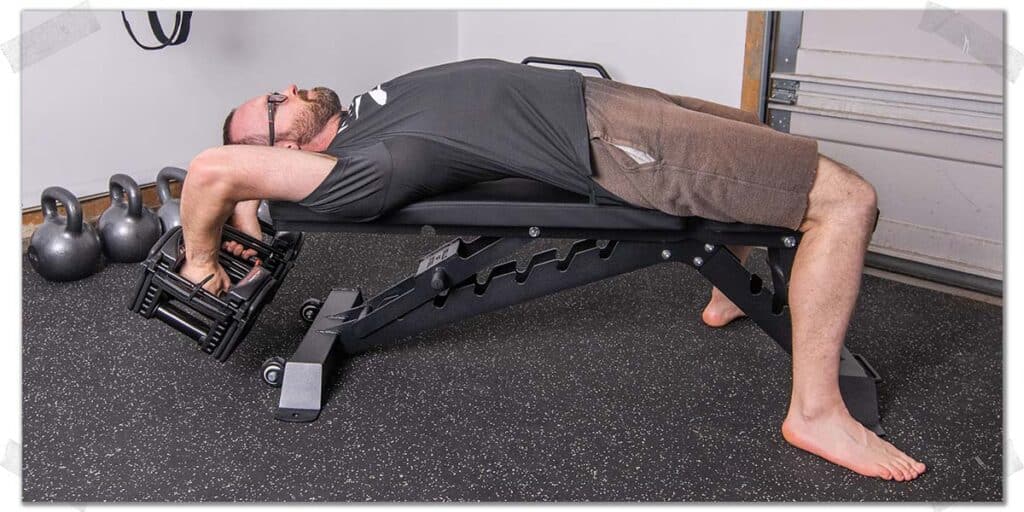
The world of resistance training and weightlifting holds a world of exercises within it. It can be very overwhelming knowing which exercises may be best for you as you look to get things underway.
What follows below are the concepts you’ll want to consider when selecting your exercises and building your resistance training routine.
Concept 1: Safety above all else
This is a pretty straightforward concept—safety trumps all. Generally, as a beginner, you’re much more prone to making mistakes with your exercise form and technique than someone who has been in this game for a while. Don’t wear it; it’s all part of the learning process. To this day, I’m sure that I have exercise form that could be cleaned up a bit on some of my own exercises.
Additionally, a body that is still adapting to the demands of physical strengthening is more prone to being strained or overworked than one that is used to the rigours and demands of resistance training.
While it can be tempting to push yourself extra hard or try advanced exercises when getting into a weightlifting routine, you need to remind yourself to ensure your safety and wellbeing remains your top priority.
Remember, you’ve got your whole life ahead to keep learning about and experiencing lifting. So, keep safety at the forefront of your pursuits, and you’ll have greater success and longevity going forward.
Related article: Sit-ups And Back Health: Why Science Suggests Other Exercises Instead
Concept 2: Isolated vs compound movements
An isolated movement refers to a strengthening exercise that targets (isolates) one single muscle (or muscle group), which is achieved by moving one joint (such as the elbow) at a time. A traditional biceps curl is an example of an isolated movement.
A compound movement, on the other hand, is a strengthening exercise that targets multiple muscles (or multiple muscle groups), which occurs by moving multiple body joints. Squats, deadlifts, and bench press are all examples of compound movements.
It’s important to know that neither type of exercise is better than the other; isolated and compound movements are both valuable when lifting weights.
Concept 3: Machines vs free-weights
It’s an age-old debate in the world of strength training: is it better to use free weights or machines for strength training? Depending on who you talk to, you’re bound to get different answers.
If you’re interested in my personal and professional insight, it’s this:
Don’t overcomplicate your strength training. As a somewhat midlife beginner, you’ll get stronger with free weights and machines. There are pros and cons to both, yet they typically become more relevant as you gain experience and progress in your strength training years.
The main exception to this rule is safety; machines can be a safer option if you don’t have much experience or confidence with free weights (dumbbells, barbells, kettlebells, etc.). The caveat here is that you’ll need to have access to machines, which for the vast majority of individuals will only be available within a gym or training facility (i.e., not in the comfort of your own home).
Again, I can’t stress enough that as a beginner, you will be just fine with either – so long as you don’t compromise your safety. At this stage in the game, your body needs to be exposed to resistance, and whether it comes from a machine or a free weight, your body won’t know or appreciate the difference.
Complexity is the enemy; keep it simple.
Final thoughts
It’s never too late to learn how to start lifting weights. If you’re in your thirties, don’t think that you’re by any means late to the party—the party is just getting started! You’ll likely have the greatest amount of success if you can look at this whole pursuit as one that yields the greatest rewards over the long term and are aware that, like any other activity, it is one that is an ongoing journey.
Frequently Asked Questions
There are all sorts of great questions people ask when wanting to learn about lifting weights and strength training in their thirties. I’ve included a few short answers below to some frequently asked questions on this topic. I hope they’re helpful for you!

Hi! I’m Jim Wittstrom, PT, DPT, CSCS, Pn1.
I am a physical therapist who is passionate about all things pertaining to strength & conditioning, human movement, injury prevention and rehabilitation. I created StrengthResurgence.com in order to help others become stronger and healthier. I also love helping aspiring students and therapists fulfill their dreams of becoming successful in school and within their clinical PT practice. Thanks for checking out my site!

